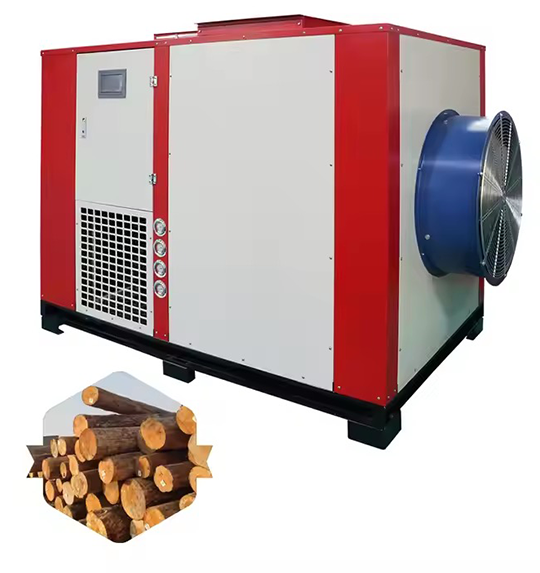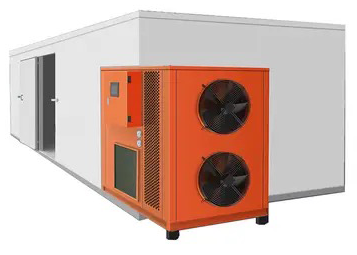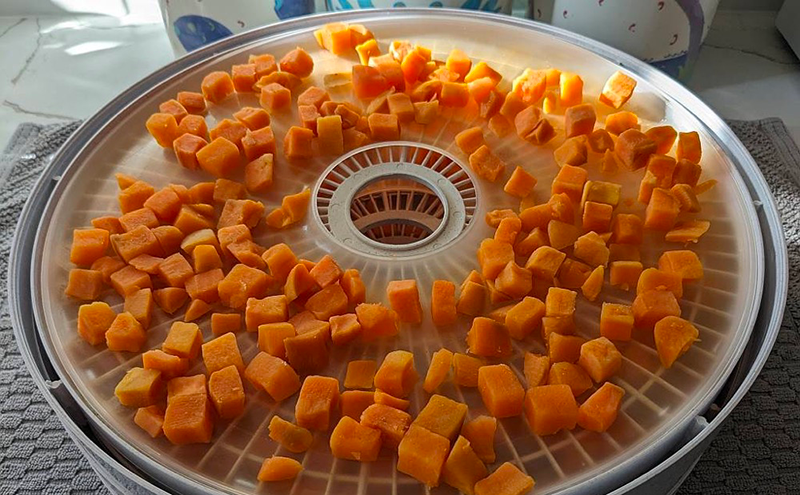
Content Menu
● Understanding Food Dehydrators
>> How Does a Food Dehydrator Work?
● Benefits of Using a Food Dehydrator
● Types of Foods You Can Dehydrate
● Is Buying a Food Dehydrator Worth It?
● Popular Recipes for Your Dehydrator
● Tips for Successful Dehydrating
● Maintaining Your Food Dehydrator
● Market Trends in Food Dehydrators
● Conclusion
● FAQ
>> 1. What types of foods can I dehydrate?
>> 2. How long does it take to dehydrate food?
>> 3. Can I use my oven instead of a dehydrator?
>> 4. Do I need to pre-treat fruits before dehydrating?
>> 5. Is it safe to dehydrate meat?
● Citations:
Food dehydrators have gained popularity among health-conscious consumers and culinary enthusiasts alike. They offer a unique way to preserve food, enhance flavors, and create healthy snacks. In this article, we will explore the benefits of food dehydrators, how they work, and whether investing in one is worth it for your kitchen.

Understanding Food Dehydrators
A food dehydrator is an appliance designed to remove moisture from food through a method called dehydration. This process involves circulating warm air around the food at low temperatures, typically between 95°F (35°C) and 165°F (74°C), allowing moisture to evaporate while preserving the food's flavor and nutrients.
How Does a Food Dehydrator Work?
The dehydration process involves several key components:
- Heating Element: Generates heat to warm the air.
- Fan: Circulates the warm air evenly across the trays.
- Trays: Hold the food items in a single layer to ensure even drying.
The result is a concentrated flavor and extended shelf life for fruits, vegetables, meats, and herbs. This method not only preserves food but also enhances its taste by intensifying flavors.
Benefits of Using a Food Dehydrator
Investing in a food dehydrator can offer numerous advantages:
- Healthier Snacks: Homemade dehydrated snacks are free from preservatives and additives commonly found in store-bought options. You control what goes into your snacks, making them healthier.
- Cost-Effective: Purchasing dehydrated foods can be expensive. By making your own, especially when buying seasonal produce in bulk, you save money in the long run.
- Reduced Food Waste: Dehydrating leftover fruits and vegetables extends their shelf life, allowing you to use what might otherwise go to waste.
- Versatility: Food dehydrators can be used for various foods including fruits, vegetables, meats (like jerky), and herbs. You can experiment with different recipes and flavorings.
- Nutrient Retention: Dehydration preserves many nutrients that can be lost through other cooking methods like boiling or frying.
Types of Foods You Can Dehydrate
Food dehydrators are versatile appliances that can handle a wide range of foods:
- Fruits: Apples, bananas, mangoes, and berries make excellent snacks when dehydrated.
- Vegetables: Carrots, bell peppers, tomatoes, and zucchini can be dried for later use in soups or stews.
- Meats: Jerky is a popular dehydrated snack that can be made from beef, turkey, or chicken.
- Herbs: Fresh herbs like basil, thyme, and oregano dry well and can be stored for later use.
Is Buying a Food Dehydrator Worth It?
When considering whether to purchase a food dehydrator, keep these points in mind:
1. Frequency of Use: If you enjoy making snacks or preserving food regularly, a dehydrator is a worthwhile investment.
2. Space Considerations: Dehydrators can take up counter or storage space. Ensure you have room for it in your kitchen.
3. Cost vs. Savings: While there is an initial cost for purchasing a dehydrator, the savings on store-bought snacks and reduced food waste can offset this over time.
4. Health Goals: If you're focused on eating healthier or have dietary restrictions, making your own snacks allows you to control ingredients better than pre-packaged options.
5. Experimentation: If you love trying new recipes or enjoy cooking as a hobby, a dehydrator opens up new culinary possibilities.

Popular Recipes for Your Dehydrator
Here are some easy recipes to get started with your food dehydrator:
- Apple Chips: Slice apples thinly (about 1/8 inch), sprinkle with cinnamon if desired, and dehydrate at 135°F (57°C) for 6–8 hours until crispy.
- Banana Chips: Slice bananas thinly and dehydrate at 135°F (57°C) for 8–12 hours until chewy or crisp.
- Vegetable Chips: Slice vegetables like kale or sweet potatoes thinly. Season lightly with salt or spices and dehydrate at 125°F (52°C) for 6–10 hours until crispy.
- Beef Jerky: Marinate strips of beef in your favorite seasoning overnight. Dehydrate at 160°F (71°C) for 4–6 hours until fully dried but still pliable.
Tips for Successful Dehydrating
To maximize the effectiveness of your food dehydrator and ensure quality results, consider these tips:
- Cut Uniformly: Ensure that all pieces are cut to similar sizes for even drying. Using a mandoline slicer can help achieve consistent thickness.
- Rotate Trays Regularly: If your dehydrator has multiple trays, rotate them every few hours to promote even drying since some areas may dry faster than others due to airflow patterns[1].
- Avoid Overloading Trays: Spread food in a single layer without overcrowding. Overloading will increase drying time significantly[4].
- Pre-Treat Fruits: To prevent browning in fruits like apples and bananas during dehydration, soak them briefly in lemon juice diluted with water before placing them in the dehydrator[1].
- Monitor Dryness Levels: Check periodically if the items are fully dried by testing their texture; they should snap easily when fully dehydrated[7].
Maintaining Your Food Dehydrator
Proper maintenance is crucial for prolonging the life of your food dehydrator:
- Regular Cleaning: Clean the trays and interior surfaces after each use to prevent residue buildup. Most parts are dishwasher safe; however, hand washing with mild detergent is also effective[5][8].
- Check Components Regularly: Inspect heating elements and fans periodically to ensure they are functioning correctly[2].
- Use Non-Stick Spray: Applying non-stick cooking spray on trays before use can help minimize sticking and make cleanup easier[5].
Market Trends in Food Dehydrators
The global market for food dehydrators has been growing steadily due to increasing awareness about healthy eating habits and sustainable practices:
- The market was valued at approximately $2.5 billion in 2023 and is projected to grow at a compound annual growth rate (CAGR) of around 6% from 2024 to 2032[3][9].
- Factors driving this growth include rising consumer demand for homemade snacks free from preservatives and additives as well as an increased focus on reducing food waste through preservation techniques[6].
Conclusion
In conclusion, investing in a food dehydrator can be highly beneficial if you value healthy eating habits, want to reduce food waste, enjoy creating your own snacks, or simply love experimenting in the kitchen. The ability to preserve seasonal produce and create delicious snacks makes it an attractive option for many households.
With careful consideration of your cooking habits and kitchen space, purchasing a food dehydrator could prove to be a worthwhile investment that enhances your culinary adventures while promoting healthier eating choices.

FAQ
1. What types of foods can I dehydrate?
You can dehydrate fruits (like apples and bananas), vegetables (such as carrots and tomatoes), meats (like beef jerky), and herbs (like basil and oregano).
2. How long does it take to dehydrate food?
Dehydration times vary based on the type of food and thickness of slices but typically range from 4 to 12 hours.
3. Can I use my oven instead of a dehydrator?
Yes, you can use an oven to dehydrate foods; however, it may not be as efficient as a dedicated dehydrator which maintains lower temperatures more effectively.
4. Do I need to pre-treat fruits before dehydrating?
Some fruits benefit from pre-treatment with lemon juice or ascorbic acid to prevent browning; however, this step is optional depending on your preference.
5. Is it safe to dehydrate meat?
Yes! When making jerky or dehydrating meat products, ensure they are cooked first to an internal temperature of at least 165°F (74°C) before drying to eliminate harmful bacteria.
Citations:
[1] https://www.cnet.com/pictures/tips-for-using-your-new-dehydrator/
[2] https://septree.com/blogs/news/do-food-dehydrators-home-commercial-need-regular-maintenance
[3] https://www.researchandmarkets.com/reports/5741424/food-dehydrators-global-market-report
[4] https://www.backpackingchef.com/dehydrating-food.html
[5] https://farmerswiferambles.com/care-for-your-food-dehydrator/
[6] https://www.gminsights.com/industry-analysis/food-dehydrator-market
[7] https://www.youtube.com/watch?v=ygE6PlbZKGA
[8] https://www.backcountrypaleo.com/cleaning-food-dehydrator/
[9] https://www.giiresearch.com/report/gmi1616766-food-dehydrator-market-opportunity-growth-drivers.html
[10] https://www.freshoffthegrid.com/dehydrating-food/











